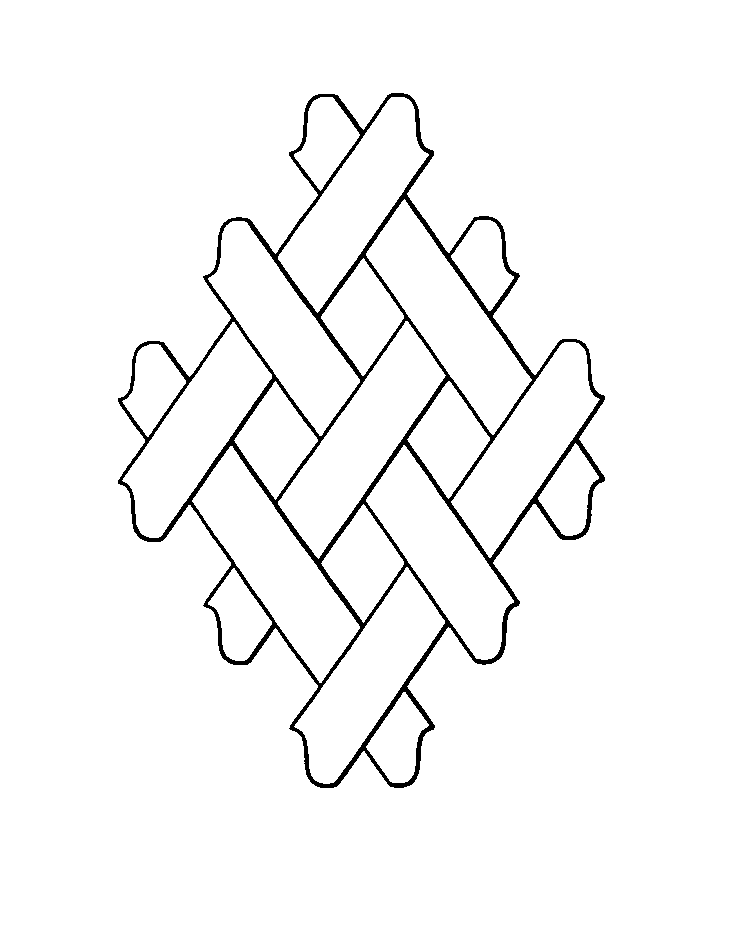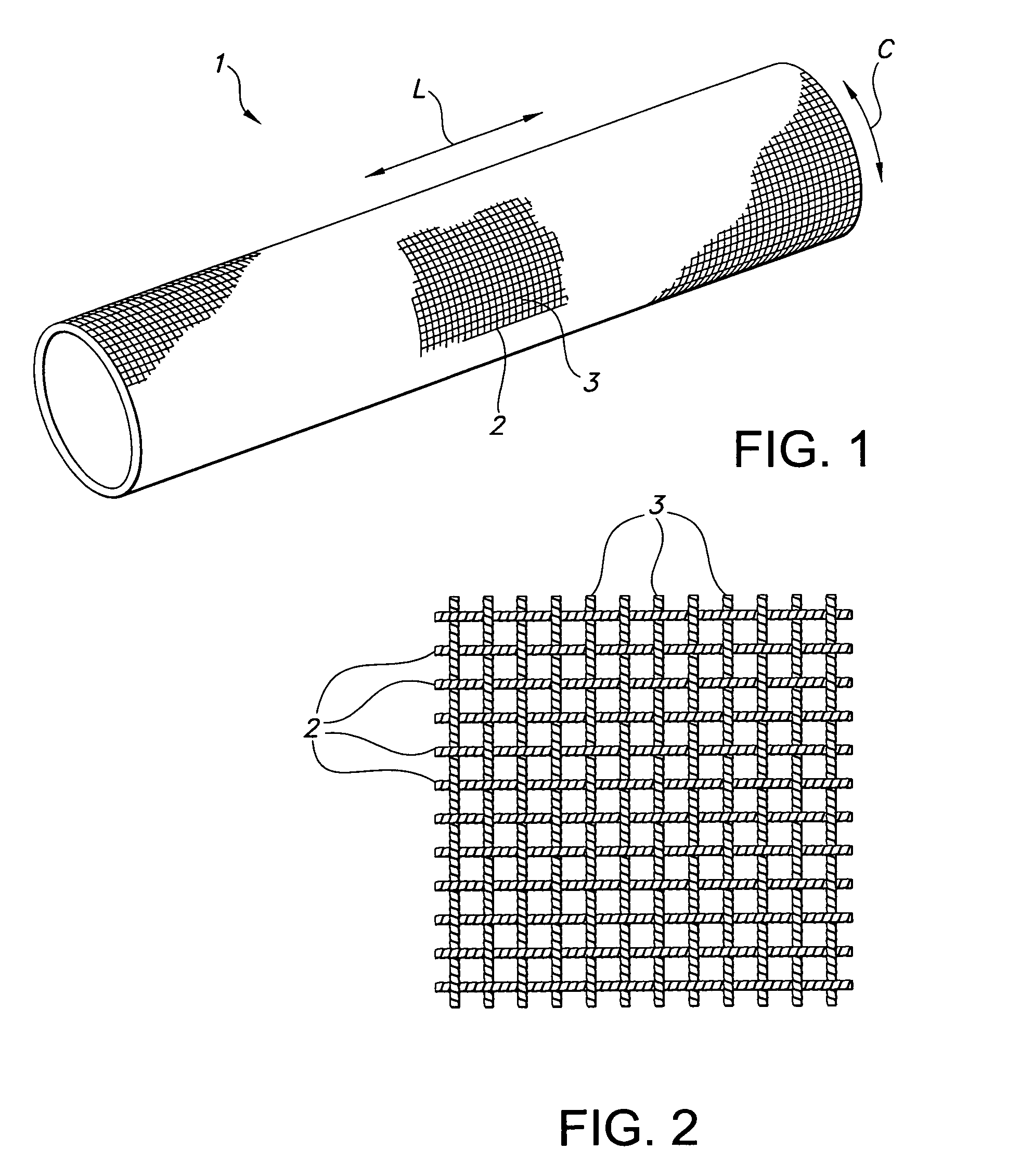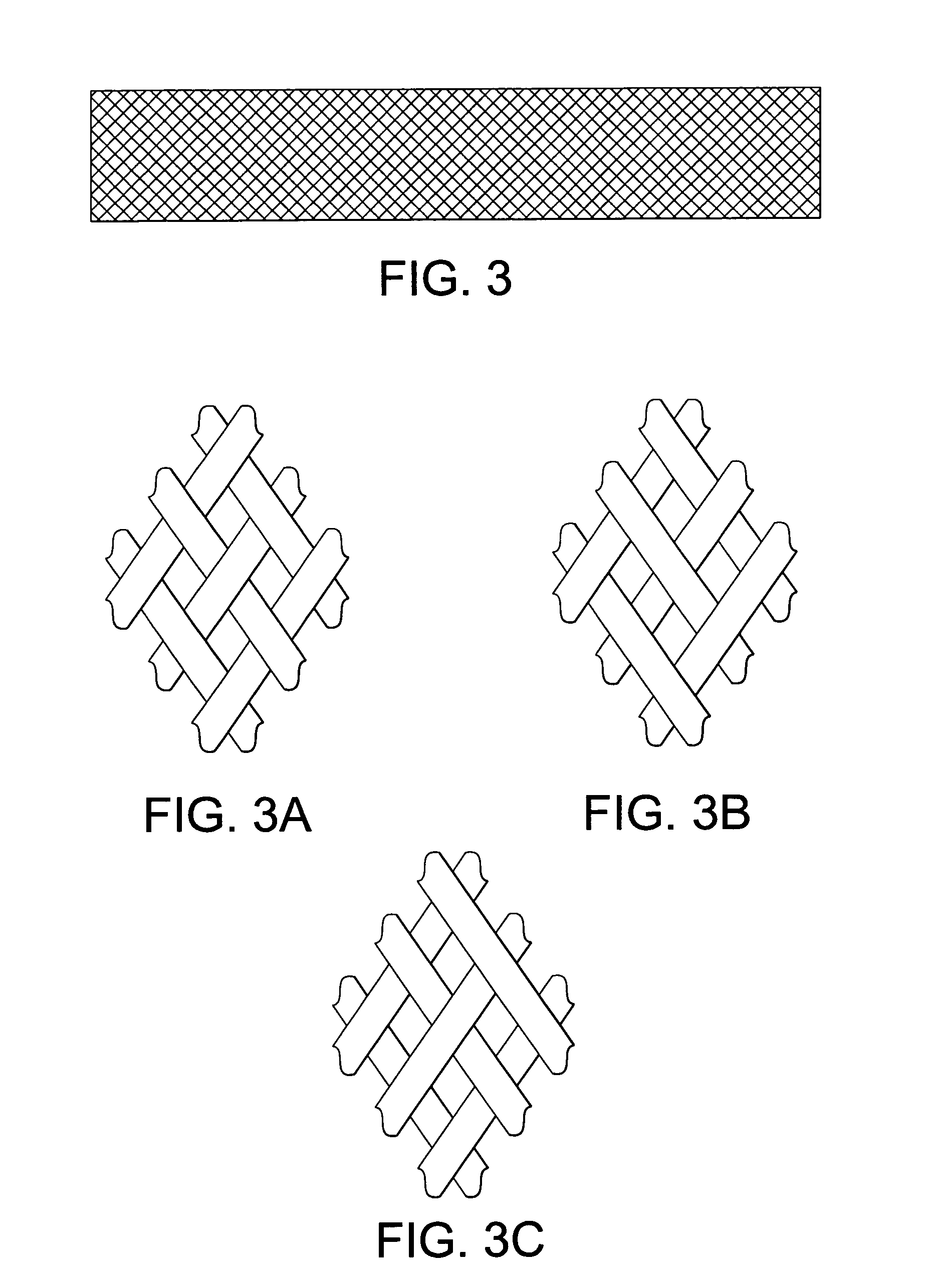Implantable prostheses with improved mechanical and chemical properties
a technology of textile prosthesis and applied in the field of implants, can solve the problems of loss of structural integrity, graft failure, and textile constructions used in these types of textile constructions are subjected to strenuous conditions, and achieve excellent performance profiles, mechanical and chemical properties, and improved mechanical and chemical properties
- Summary
- Abstract
- Description
- Claims
- Application Information
AI Technical Summary
Benefits of technology
Problems solved by technology
Method used
Image
Examples
example 1
Woven Construction
[0062]A prosthesis is flat woven on an electric jacquard loom in a tubular configuration. A 1 / 1 plain, tubular weave is used with a warp yarn of textured 50 denier, 48 filament polyethylene naphthalate fully oriented drawn yarn. A flat 115 denier 100 filament partially oriented partially drawn polyethylene naphthalate fill yarns is used with 160 warp ends per inch per layer and 120 pick yarns per inch per layer.
[0063]After weaving the prosthesis, the fabric is scoured in a basic solution of warm water, (e.g., 120° F.) and detergent, followed by rinsing to remove the detergent. The prothesis is then attached to a stent fixation device and assembled into a catheter delivery system, or alternatively surgically implanted.
[0064]The above is performed with polybutylene naphthalate yarns with excellent results.
example 2
Woven Construction
[0065]A graft-stent composite, in accordance with the present invention, is formed from a plain weave tubular fabric having a warp yarn of 50 denier, 48 filament flat polyethylene naphthalate and weft yarn of 50 denier, 48 filament flat polyethylene naphthalate. The ends per square inch are 188 per layer while the picks per inch are 88 per layer. The fabric so formed has a wall thickness of approximately 0.12 mm or less. After weaving into a tubular prosthesis, the prosthesis is scoured to remove dirt, oil and other processing agents. The material is then heat set to stabilize the prosthesis. Heat setting is accomplished by using a conventional oven. The tubular fabric is heat set on smooth mandrels to precisely set the diameter and to remove any creases or wrinkles. The prosthesis is then optionally crimped to impart longitudinal compliance and radial support.
[0066]A stent is inserted into the graft (endoprosthesis) to form a stent / graft composite. To secure the s...
example 3
Braided Construction
[0068]A regular twill braid is used to produce a tubular prosthesis. The warp yarns and fill yarns are constructed of a two-ply, flat 115 denier, 100 filament partially oriented and partially drawn polyethylene naphthalate yarns. A prosthesis with a diameter of 10 millimeters is achieved using 96 carriers and a 55 degree helix angle.
[0069]After braiding the prosthesis, the fabric is scoured in a basic solution of warm water (e.g., 120° F.) and detergent, followed by rinsing to remove the detergent. The prosthesis is then attached to a stent device and assembled into a catheter delivery system for minimally invasive deployment in the body or, alternatively surgically implanted.
PUM
| Property | Measurement | Unit |
|---|---|---|
| temperature | aaaaa | aaaaa |
| temperatures | aaaaa | aaaaa |
| temperatures | aaaaa | aaaaa |
Abstract
Description
Claims
Application Information
 Login to View More
Login to View More - R&D
- Intellectual Property
- Life Sciences
- Materials
- Tech Scout
- Unparalleled Data Quality
- Higher Quality Content
- 60% Fewer Hallucinations
Browse by: Latest US Patents, China's latest patents, Technical Efficacy Thesaurus, Application Domain, Technology Topic, Popular Technical Reports.
© 2025 PatSnap. All rights reserved.Legal|Privacy policy|Modern Slavery Act Transparency Statement|Sitemap|About US| Contact US: help@patsnap.com



